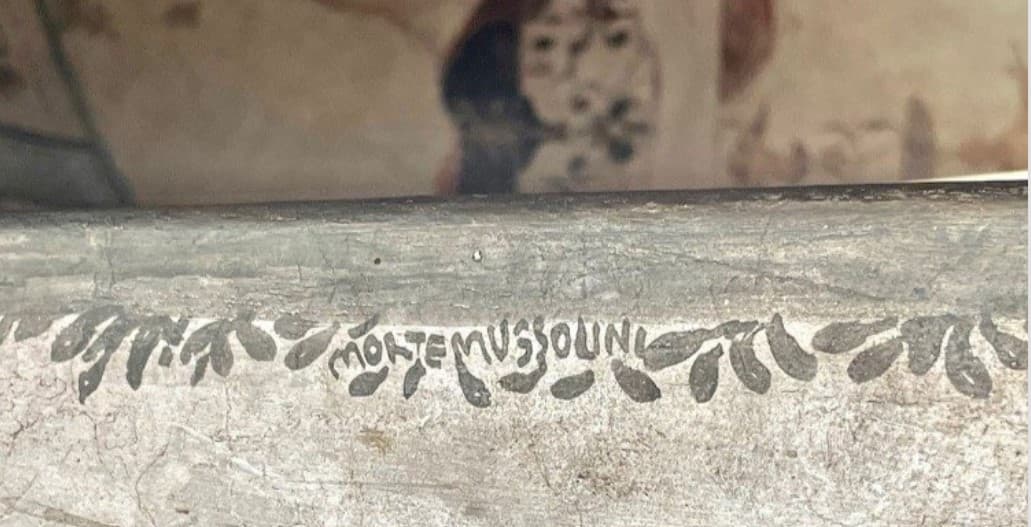ROME – On the anniversary of events that triggered the German occupation of Rome in 1943, the Vatican has announced the discovery of a previously undetected piece of anti-fascist graffiti in the Apostolic Palace, in the offices of the Secretariat of State.
The small handwritten graffiti, hidden among a set of decorative leaves on a window frieze in a waiting room of the Secretariat of State, reads Morte Mussolini, or “death to Mussolini,” a reference to Italy’s fascist leader during the Second World War.
The graffiti had gone unnoticed until recently, when it was discovered during routine maintenance. It was scrawled onto the window jamb in a room that was originally the apartment of Cardinal Bernardo Dovizi da Bibbiena, a close advisor to Pope Leo X during the 16th century.
Later, it was converted into one of the waiting rooms used by visitors to the Secretariat of State, the Vatican’s most important department for both external diplomacy and also internal governance. The decorations on the floor upon which the offices are located, known in Italian as the Terza Loggia, are conventionally attributed to the Renaissance artist Raphael.
The discovery of the graffiti was announced on Sept. 8, which is the anniversary of an armistice declared after Mussolini had been deposed in the summer of 1943, which led directly to a German invasion and occupation of much of Italy, including the city of Rome.
The graffiti was highlighted by Vatican News, the official news service of the Vatican, in tandem with the announcement of the discovery of a list of Jews saved by church institutions in Rome during the German occupation. While the existence of such a list had been known to scholars, the original was recently found in the archives of the Jesuit-run Pontifical Biblical Institute.
RELATED: List documents Jews saved by church during Nazi occupation of Rome
Although it’s unknow who etched the graffiti onto the wall of the waiting room, the Vatican News coverage highlighted that in the period 1943-46, restoration work was carried out on the Terza Loggi to remove coatings of lime that had built up over the centuries.
One of the firms involved in the project was a company called “A.Valci Decorations and Paintings,” which, in January 1944, filed a letter with the office of technical services at the Vatican attesting that one of its employees was an Italian named Mario Bianchi, accompanied by a photo ID.
According to archives at Yad Vashem, the international center for Holocaust research, “Mario Bianchi” was a pseudonym for Ulisse Finzi, an Italian Jew from the city of Milan, and the husband of Matilde Bassani, a leader in the Italian resistance movement. Prior to the adoption of the Italian racial laws in 1938, Finzi and his father had owned a fur shop in Milan with a branch in Rome.
During the period of the occupation Finzi adopted a false name and took a job working with the Valci company, suggesting it’s possible he may have been involved in the project in the Apostolic Palace and thus could have been the author of the anonymous graffiti.














